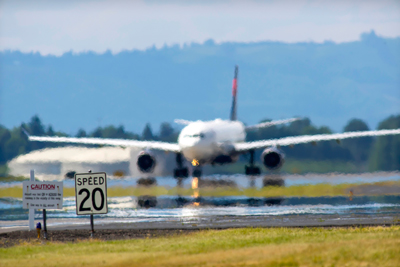Heat haze is an atmospheric condition that occurs when a body such as the ground is reflecting a lot of heat. It is caused by the difference in temperature between the hot body and cooler air around it. When shooting images, strong heat haze is easy to identify but weak heat haze may be incorrectly identified as a potential image problem if the actual reason is not known.

Strong heat haze can be easily recognised by the shimmering bars that appear to radiate above the ground and sometimes has a mirror-like quality (as in the image above). However it is not always easy to recognise the effects of weaker heat haze.
Depending on the subject and background heat haze can be hard to spot while shooting. Heat haze can affect the overall image quality and the ability of a cameras autofocus system to lock on to the subject correctly. If you are shooting with a telephoto or super telephoto lens and your subject is affected by heat haze, you may find your images display lower than normal resolution, lack sharpness, or when reviewing images no focus point is displayed. Telephoto and super telephoto lenses are often used to capture images outdoors over significant distances at low angles to the ground and for this reason users are more likely to encounter heat haze.
To reduce heat haze:
-
Adjust your angle of view, as heat haze tends to occur close to the ground, shooting higher, further away from the ground will reduce the effect.
-
Depending on your shooting conditions get closer to the subject.
-
Wait for the conditions to cool sufficiently so that the heat haze subsides.
Manually focusing on your subject or focusing on an object at the same distance as your subject can help with autofocus issues, but images can still be affected by low resolution or lack of sharpness. Heat haze is difficult to remove in post-production, so spotting and addressing it while shooting is the best method to avoid potential issues.